A film sponsored by the Crown Zellerbach Corporation, an American pulp and paper conglomerate.
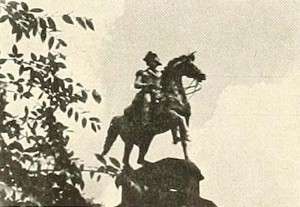
"To love a place so well that you can film it so well that the result becomes commercially sought is not the happy fortune of every movie amateur. Waldo E. Austin's Richmond Under Three Flags was paid for by the Morris Plan Bank of Virginia, in Richmond, and is distributed by the Virginia Conservation Commission. Here, a man of culture and a filmer of exceptional care and refinement has given us his own home, lovingly and interestingly presented, with a happy quota of cinematic ornaments. The pace of this accomplishment is leisurely, as was the Old South, yet its manner is modern, as is the new Richmond. In the title wordings, Mr. Austin is especially fortunate, avoiding banality on the one hand and '"fine writing" on the other, with just enough rhetoric to give the flavor of one of the country's most rhetorical centers. The interior scenes of public buildings have been accomplished with an apparent effortlessness that conceals a great deal of effort. Here is the publicity film in its most suave expression." Movie Makers, Dec. 1937, 627-628.
"Russell Sage Foundation, made by Theodore Huff, ACL, for the members of the staff of Russell Sage Foundation and dedicated to John M. Glenn, retiring General Director, offers an interesting solution of a very difficult cinematic problem. It was desired to present glimpses of the work of the various departments of the Foundation, to include members of the staff of each department and to give the highlights of their achievements under Mr. Glenn's direction. Although the problem was complex, Mr. Huff succeeded in making a smooth and entertaining picture full of cinematic interest." Movie Makers, Dec. 1932, 561.
"Edited film shot during the Franco-American Expedition to Algeria which was sponsored jointly by the Logan Museum of Anthropology, Beloit College, and the Algerian government. Led by Alonzo Pond, Byron Khun de Prorok, and Maurice Reygasse, the expedition traveled from Biskra to Tamanrasset and back in three specially constructed Renault vehicles in October and November of 1925. The expedition excavated both prehistoric and ancient Sahara habitations and observed various Hoggar Tuaregs. Film features excavations on the ancient tombs near Tamanrasset (including the tomb of Queen Tin-Hinan, ancestral mother of the Tuaregs), French colonial outposts, encounters with Tuareg chiefs, and a wrestling match, a slave tent, and head shaving in a Tuareg camp," Human Studies Film Archives.
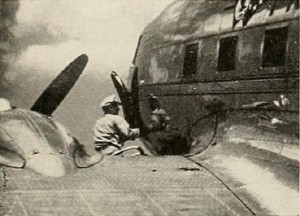
"Although Song of a City was probably as carefully planned as any film could be, it still got out of hand and grew on its producer. Try filming a great metropolis yourself sometime, and you will begin to understand what John Flory faced in this splendid study of the city of Cleveland. For this is no simple record, content with the physical surface of streets and skyscrapers, ships and steel. Song of a City is a heroic canvas, seeking to present in dynamic imagery the inner significance and meaning of its vast subject, relating the ships and steel, the workers and the wealthy, to the pulsating life of their community. Mr. Flory's sponsor in this new form of industrial publicity was the Cleveland Trust Company, and it is to this institution that the film turns recurrently in presenting its message of finance in the modern world." Movie Makers, Dec. 1941, 568.
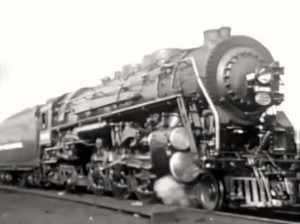
"The Steam Locomotive, second release in the Know Your Railroad series, sponsored and produced by the Motion Picture Bureau of the New York Central System, is a worthy successor in this intelligent line of educational films. In it, Frederick G. Beach, supervisor of the bureau, has set forth in clean cut cinematography the design, construction, operation and maintenance of the famous Hudson type locomotive. An animated model of a steam cylinder explains the otherwise hidden functions of this key piece of machinery, while a soundly conceived narrative points up the film's visual teaching throughout. A stirring sequence showing these great coal eating giants at their daily tasks brings the picture to a dramatic close." Movie Makers, Dec. 1944, 495.
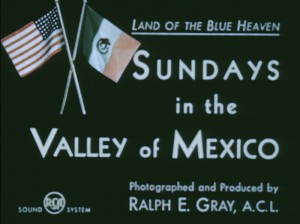
"A colorful travelogue of modern, urban life in Mexico City. "Shows scenes typical of modern Mexico, such as the tall buildings and wide boulevards of Mexico City. The canal leading to Xochimilco, with its fruit- and flower-laden boats, is pictured. Then describes a festival held in honor of the Vice President of the United States, Henry Wallace, when he visited Mexico City. It includes a bullfight and a parade of Mexican beauties. Ends with a pageant of old and new Mexican dances" (War Films Bulletin of the Extension Division Indiana University, February, 1943, 19)" Indiana University Libraries Moving Image Archive.
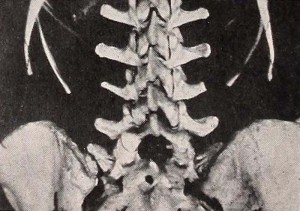
"Imagine, if you can, a subject which would be harder to present in motion pictures than the effects of a spinal anaesthetic. This is the problem that Leslie P. Thatcher solved so ably in his Technique and Principles of Spinal Anaesthesia with Nupercaine. Because most of the action takes place within the body, it was necessary to do some real thinking before a suitable motion picture presentation could be worked out. For example, the action of the fluid as it floats in the spinal canal was shown dramatically and effectively by floating some of the drug in a solution in a slowly tilting glass phial. A considerable use of X-rays served to show clearly just how the hypodermic needle should be handled, while well photographed diagrams and models aid the film's clarity. Operative scenes represent the best technique, and the action clearly demonstrates the qualities of Nupercaine as an anaesthetic. The picture is a study in straightforward exposition and, as such, it should serve its sponsors admirably. It is to be noted that Mr. Thatcher showed admirable restraint in his brief shots of operations. While sufficient for the medical man, they are not too long or gruesome for a lay audience." Movie Makers, Dec. 1939, 633-634.
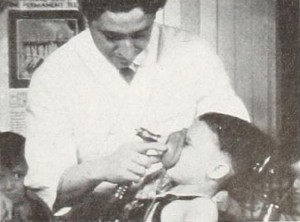
"Morton H. Read has made, in Teeth and Good Health, an effective study of the work accomplished by the Dental Clinic of the Public Schools of Springfield, Mass. This film should be of great interest to educators whose institutions offer a similar service to children of grade school age. The picture lucidly outlines the program followed by the teachers, nurses and doctors in the system set up by this school, to facilitate caring for the children's teeth. Charts and diagrams that warn the children of the danger of neglected teeth are shown, as well as excellent shots of the dentists at work. Thus, through familiarizing youngsters with the importance of dental care and its mechanics, the child is taught not to fear the dentist. A recalcitrant mother serves as a focal point for the detailed explanation of the advantages of the dental program in the school. The filming is marked by competent cinematography, logical sequence arrangement and simplification of detail." Movie Makers, Dec. 1942, 509-510.
"BC Packers (Western Canadian Whaling Ltd.) whaling operations, based at Coal Harbour in Quatsino Sound. The whaling vessel Polar V leaves on a voyage. Preparation of equipment, including harpoons and harpoon gun. A whale is sighted, pursued and harpooned; it struggles, dies, and is flagged. The onboard scenes continue, showing more harpoon preparation, hunting and killing of whales. Whale is towed to Coal Harbour, where the flensing, butchering and processing of the carcass is shown. The Polar V sets out again; in very rough seas, another whale is pursued and killed. " (BC Archives)
The Western Canada Whaling Company was a sub-division of British Columbia Packers Limited.
The filmmaker is not identified. Film begins with the credit "British Columbia Packers presents..."
Total Pages: 8